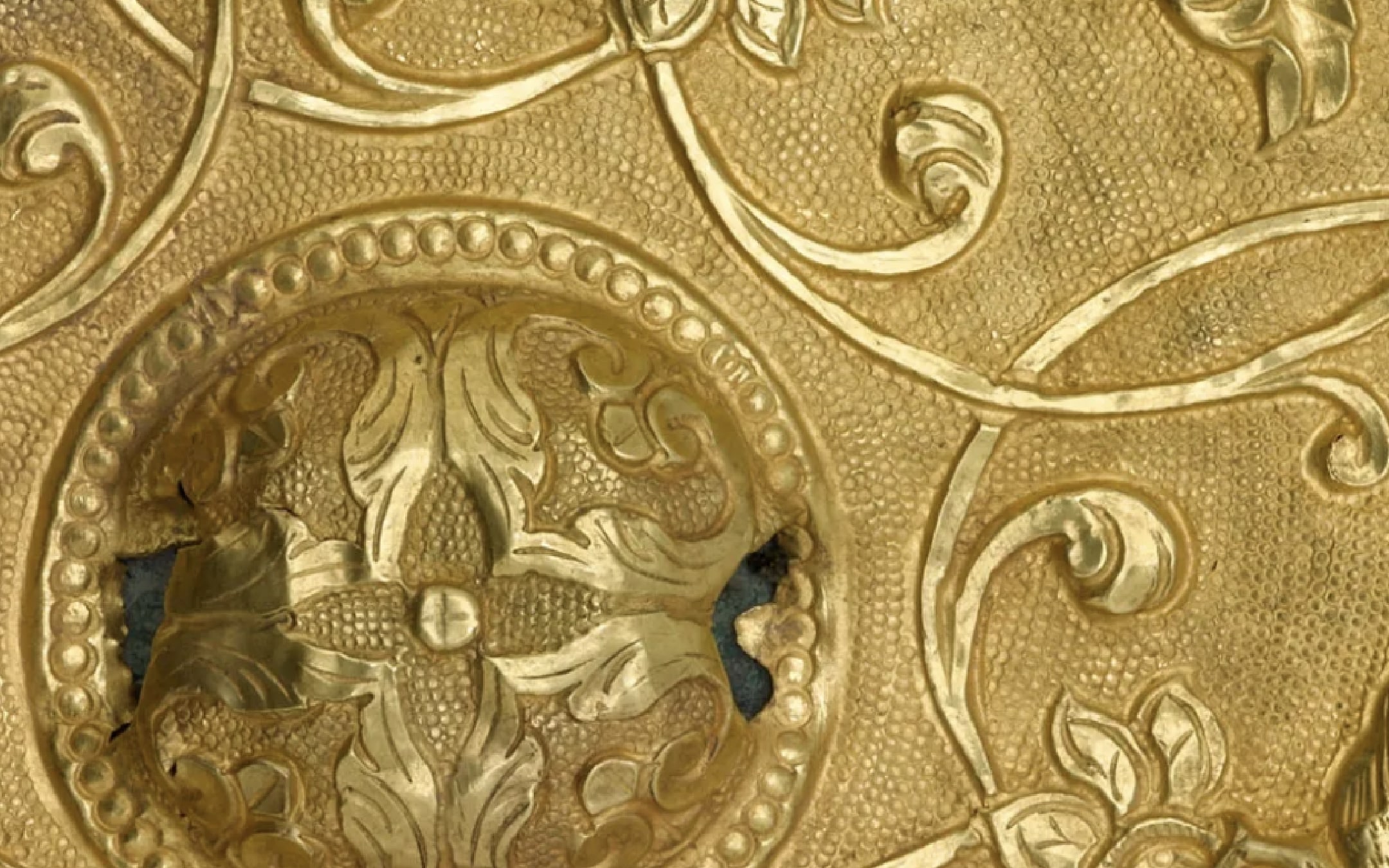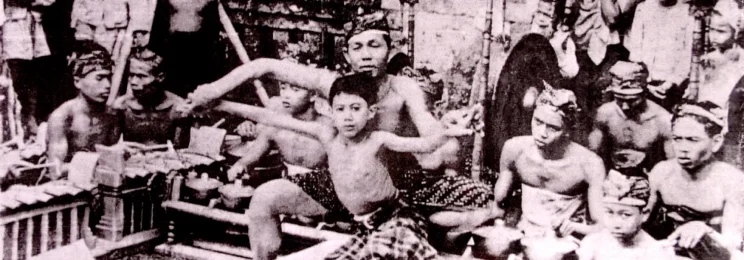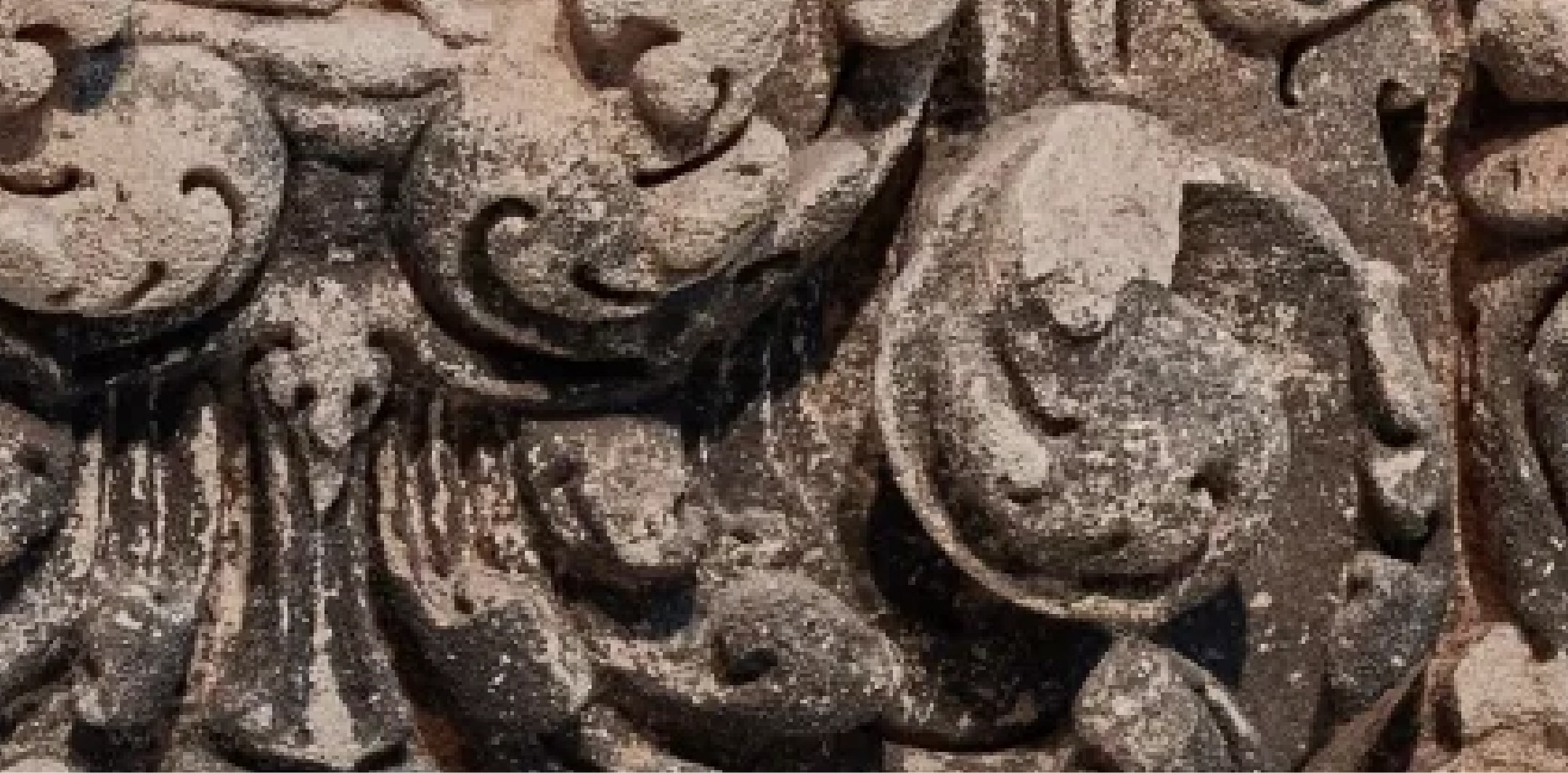Parallel Strategies
With those thoughts in mind, I attended another centenary celebration, this one from a remote cultural universe. Stravinsky’s “The Rite of Spring” (Le Sacre du Printemps) was being performed, admired, and discussed in a thousand forums. (Technically, the anniversary of its Paris premiere fell on May 29, 2013, but activities continued into the late summer and fall of 2014.) The piece was performed and feted by major orchestras throughout the United States, including the San Francisco Symphony. As I witnessed all the activity, a question that had flickered across my mind years earlier reappeared in living color. How could it be that “The Rite of Spring” and the kebyar style were created at almost the same instant? Despite the geographic and cultural distance, they seemed to be speaking the same language, and adjusting for scale, their profiles of rapid influence were nearly identical.
Thus regarded, many similarities came into view. The most immediate is in their rhythmic materials. “Kebyar Legong,” one of the three founding dance pieces of kebyar, is characterized, just as “The Rite of Spring,” by a kind of rhythmic impulsiveness, an unabashed celebration of irregularity, of the disturbance of steady metric flow. These qualities were intentional, not accidental or secondary (e.g., the metric consequences of text-setting), and were showcased to a previously unknown degree. They became affirmations of unpredictability and irrationality. Tilman Seebass sees kebyar’s emergence as being indicative of a fundamental change in mentality and a condensed, heightened perception of time. He contrasts the sharp dynamic profile of early kebyar pieces with the slowly changing, cyclical, and “static” form of traditional works (Seebass 1996). “Kebyar Legong” uses, for its opening section, the quintessential gambit of the kebyar style: a full orchestra tutti, with no beat or meter, played fortissimo, tumbling forward in cascades of angular rhythms. Bronze metallophones, cymbals, large gongs, tuned gong-chimes, and drums are all united in the rhythmic melee, which might last a minute or more. These startling passages so characterize the style—and indeed are probably its stylistic origin point (McPhee 1966:342)—that they themselves are simply called “kebyar” (as in, “Let’s take it from the kebyar”). To represent such music in Western staff notation, a well-equipped, modern notational arsenal is needed, with tuplets of five or seven, dotted and double-dotted rhythms, unspecified note-lengths, and a profusion of fermatas to indicate kebyar’s many tense pauses. Stravinsky had all of these notational tools at his disposal, while Balinese kebyar musicians and composers achieved such sophistication in an oral tradition and through intensive rehearsal. The musical end products, however, were strikingly similar.
On top of these jagged rhythms, and indeed through them, both pieces also demonstrate a shared fascination with extreme contrast. Both are sensationalist in intent, deploying not only irregular full-orchestra outbursts and dense textures but also their affective opposites. Sweet, gentle passages are found in both (assuming we adjust for sonic differences. A “sweet” section performed by a twenty-five-piece bronze percussion orchestra has a different acoustic profile than, say, the string section of a symphony orchestra.) Dynamic contrast is common in music worldwide; the distinguishing aspect here lay in the use of such juxtapositions as a dramatic strategy. I think of the plaintive cry of the single bassoon in its highest register that begins “The Rite of Spring,” followed only moments later by a full-throttled, dissonant charge of rhythm by a huge orchestra with a fortified percussion section. Balinese performers usually do this in the reverse order. The fortissimokebyar section that opens many pieces often leads, with little or no transition, to a section of expansive tranquility.
Kebyar’s earliest works showed another strategy that Stravinsky also exploited: the evocation of the remote, mythologized past. In Bali this was part of a broader tradition in which divergent cultural strata were combined into a high-low mix, synthesizing popular culture with religious or high art forms (see McPhee 1966:343 for the Balinese case). In “The Rite,” Stravinsky fused folk melodies and a story of primitive, ritualistic acts with sophisticated, extended techniques in the symphonic tradition. The high-low combo thus worked in two, parallel ways, as he turned his composer’s regard simultaneously to the past and to the future, both “downward” to the spontaneous tunes of the common folk and “upward” to the intellectual high ground of the Western musical elite.
In Bali, admixtures of past and present, of high and low, were already well established in performing arts traditions by the early twentieth century. These were part of a complex of literary and linguistic practices in which ancient and modern languages (and modes of delivery, such as theater, speech, poetry, and song) were used, and widely understood, in the interpenetration of ancient ideas, thoughts, and customs with modern ones (Wallis 1980). This dualism—ancient/modern, left/right, good/evil, sacred/profane—is not restricted to Bali. (See Sumarsam’s introduction for the larger Indonesian case.) Recitation was one of the most popular delivery modes. Two vocalists read from sacred texts in stylized tonalities, with one singing the rarefied ancient language of Kawi (also known as Old Javanese) and alternating with a partner’s paraphrase in modern High Balinese delivered in a singsong sprechstimme, “an extemporaneous rendering of the text’s meaning in stylized vernacular” (Zurbuchen 1987:91). (Kawi is the Latin of Bali. Only priests and other literati understand it, so translations are necessary.) These texts opened a modern window to the mythologized past, bringing to life the great Hindu stories, such as the dynastic struggles between the warring princes of the Mahabharata.
How did kebyar fit in to these vocal traditions? In its first appearances, kebyar was the stuff in-between, the instrumental interludes between readings, provided by the gamelan orchestra seated just behind the two vocalists (McPhee 1966:343). The gamelan players interjected music of extreme contrast—short outbursts of percussive cadenza-like unison rhythms—before the vocalists took up another measured reading of poetic texts. This was music to jolt listeners awake, in case the ancient language was lulling them into serene contemplation. (Haydn would be pleased.) The very word kebyar expresses the intended shock. The root is /byar/, which in Balinese is akin to the “bang!” or “pow!” or “zap!” of Batman comics. Byar! is a sudden explosion.
The sensational qualities of kebyar also served another goal or, in the opinion of one Balinese expert and his American coauthor, were the consequences of another impulse, since the readings were not only devotional but also competitive (Bandem and deBoer 1995:74). Pairs of vocalists, with their respective gamelan orchestras, engaged in head-to-head competitions with opposing teams that could last up to three days. In the festival context, shock tactics could be decisive, bringing enough popular approval to tilt the match. This sensationalist one-upmanship became permanently attached to kebyar and lives on in modern gamelan competitions, which often resemble sporting events. In today’s urban, stadium-sized gamelan face-offs, crowds have been known to jeer the opposing groups, throw things at them, or sabotage their performances, while the groups themselves play to the crowds with elaborately staged gestures and movement. Folklore from the earliest years of kebyar is rich with stories of musicians taking extreme measures to win gamelan matches, all the way up to espionage. One group dispatched a team of players to sneak covertly into the rehearsals of a rival gamelan ensemble in an effort to memorize and steal their rhythms and techniques (individual spies were assigned different sections of the kebyar orchestra), teach them to their own group, and later brandish them in competition ahead of their opponents, demoralizing them.
Another essential strategy exploited by these geographically distant artists was the fusing of disciplines: Dance was wedded to music. Kebyar’s initial moments might have been as instrumental interludes, but movement was quickly added to the mix. The first self-standing kebyar pieces, which appeared by the mid-1920s, were all dances. Movement was no simple overlay; the fusion was integral, expressed on all levels of form, articulation, and accent- a perfect example of the porousness of Balinese artistic categories. “Palewakya,” one of the founding kebyar works, features a solo dancer, but it also weaves recitation into the artistic design, a direct consequence of kebyar’s origins. Alternating with fast, energetic sections are sweeter, slower, evenly paced ones—the characteristic kebyar contrast—in which the solo dancer launches into recitations of palewakya, pastoral poems declaimed in a manner similar to kekawin, the sacred vocal genre of recitation competitions. Midway through “Palewakya,” the musical flow abruptly halts, and the dancer-reciter adds yet another role, that of musician. She picks up two long mallets, and plays a few improvisatory notes on the long trompong (a row of gong chimes) with stylized, twirling gestures that punctuate and underline her recitations. A translator, seated among the gamelan musicians, provides interpretations in High Balinese. She proceeds in this way to the end of the piece, interweaving roles as dancer, singer, and musician. Like the shuddering and whirling dancers of “The Rite,” her movement becomes, in a thrilling final section, infused with an irrepressible rhythmic power, as if animated by subterranean forces almost too great to control. Vaslav Nijinsky would have taken notes.



